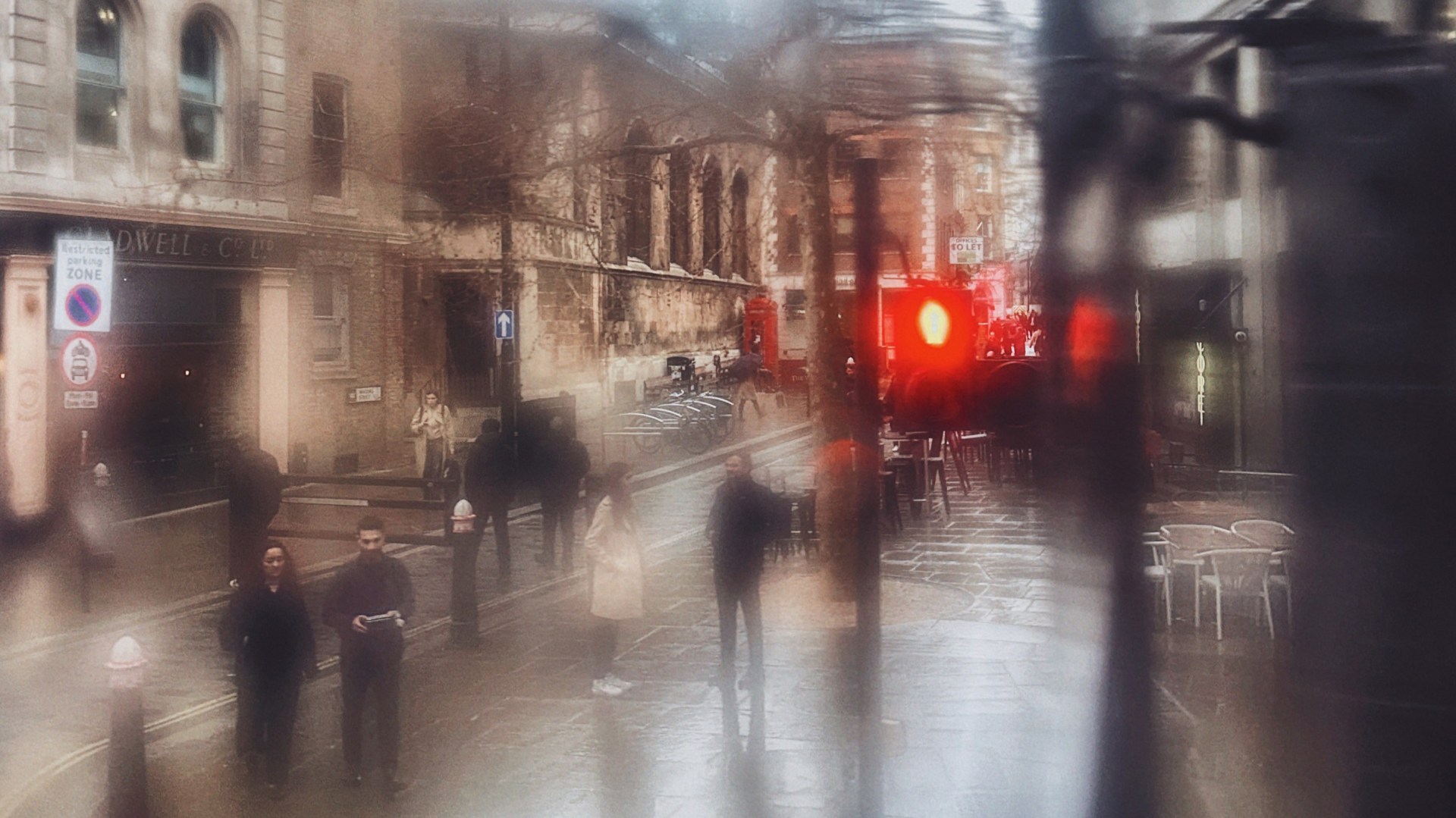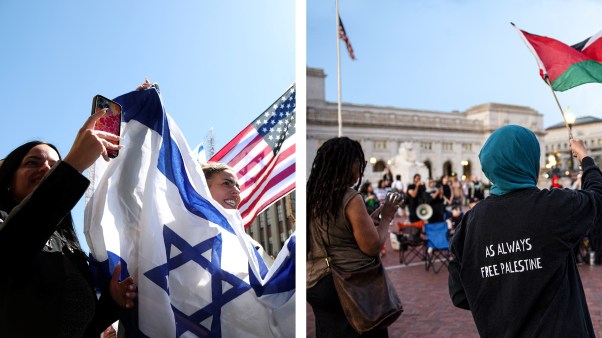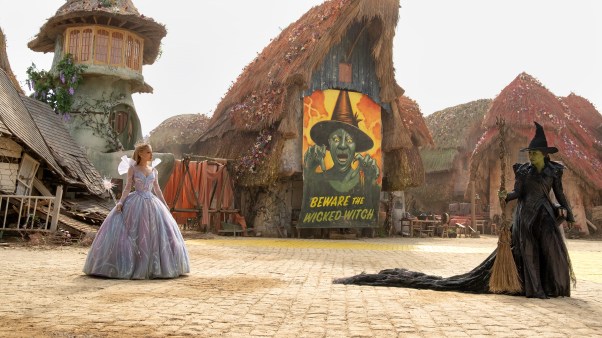I’m no small-town girl, but I’d never lived in a big city before London.
Well, except for Los Angeles. But Los Angeles is a car city. You can cruise through it in the safety of your climate-controlled two-ton metal box, with background music that you choose.
Once, late at night, I stopped at a gas station off an unfamiliar exit to fill up my car. As I stepped out to open the latch to my gas tank, I was met by a gas station attendant looking at me incredulously. “What are you doing?” he demanded. “Get back in your car and drive.” This was not the place for me—at least not tonight. I hopped back in my car and drove straight out of there.
But that’s the thing about car cities. You can always retreat to a place where there is a barrier between you and the world. You may encounter thousands of people on Interstate 5, but it’s with a buffer between you of steel and rubber.
There is no such buffer in a walking city. In a pedestrian city, you see the world face-to-face.
For the first few months after we moved to London, I felt tired all the time. Maybe it was the move, I thought. It is exhausting to pack and unpack all your possessions, and for every ordinary part of your day to be new.
Or perhaps it was the gloom of London weather. We moved to London in December, and after the lights and red ribbons of Christmastime came down, the city plunged into months of the biting, deep cold of winter. Or perhaps my tiredness was a symptom of something more psychological.
As the months wore on, I realized that my tiredness had a simpler cause: I was exhausted by the sheer number of human beings I encountered on an average day. To travel to the university where I work, I take two trains. If I travel at peak hour, I sometimes find myself standing chest to back with dozens of strangers.
As we poured out of the Central line at Holborn, I thought about how we must look from above. A great snaking river of people, rushing in the same direction, finding our way through the twists and turns of the underground station like a stream of water finds its way down a hill. Sometimes it felt like I was a part of one giant organism, with hundreds of wills and destinies momentarily aligned with the common goal of breaking out of the station and pouring onto the Kingsway.
It was not merely the volume of people I encountered that exhausted me but the volatility. You never know what you’ll encounter in a city. Once, I saw a man standing bewildered with a bowler hat full of vomit. Was it his own or someone else’s? No one stopped to investigate. Instead, as if a force field with a radius of five feet surrounded him, people simply avoided him with one accord and without comment.
I’ve also found myself in the middle of a rave on the tube, between people shouting at each other or wearing costumes. I often see people on their way to protests with handmade signs. Very often, there will be people with opposing signs in the same carriage.
My tiredness in those first months did not always come from the volatility or danger. Sometimes it came from my heart being touched by sweetness or sadness.
There was the woman who appeared to be having a schizophrenic episode. She was dressed well, professionally even, and was harmlessly chattering away to an invisible companion. No one reacted to or even avoided her. They had seen someone like her before, and they will again. She reached her stop, stood, and gestured to no one beside her to exit as well. I wondered if her family worried about her. I was glad people were patient with her.
I was wearied by encountering human beings every day, face to face, no buffer.
The German sociologist Max Weber famously describes the modern world as being characterized by Entzauberung der Welt—the disenchantment of the world. Medieval people, says Weber, experienced the world as a place charged with spiritual potency, with meaning engraved in every flower and turn of the seasons. Modern people are more pragmatic and circumspect, viewing a flower as just a flower.
Philosopher Charles Taylor describes the average person walking around in the modern world as the “buffered individual,” someone who sees themselves as sealed off—separate from the world and the people outside of them. Alison Milbank adds that this is a “turning away from the supernatural toward the psychological.” We struggle with “inner demons,” not real ones.
The buffered modern self contrasts with the medieval “porous” person who is like a sponge, their moods and personalities influenced by the movement of the stars and the spiritual world believed to be humming around them. Modern people are, by contrast, sealed off, unmoved. Taylor’s description of the buffered self resonates with many people, who lament the resulting lack of meaning.
But breaking out of this disenchantment is not easy, not only because it is the default outlook of the modern person, as automatic as brushing our teeth in the morning. No, it is difficult because it is frightening.
To believe that the world is subject to the influences of benevolent and malevolent spiritual forces would mean we’re not as in control as we think we are. Taylor writes that the person who “no longer fears demons, spiritus, magic forces, who is disembodied from the social world … enjoys a kind of mental invulnerability in his or her private castle.”
To carry forward, we stay buffered because we feel safer in our self-chosen fortress than in openness to the world. I’d written about Taylor’s idea of the buffered self, but moving to London helped me understand what it meant in a more visceral, experiential way.
It was funny. If you’d asked me whether I’d rather live in a place that didn’t require me to own a car, I would have agreed wholeheartedly. It’s better for the environment, for exercise, for community, I would say. And if you’d asked me whether I’d rather be a buffered or a porous individual, à la Taylor, I’d probably answer “porous, of course.”
But for all this, I found the transition to London much more uncomfortable than I expected—like getting doused in cold water. And like a dry, hardened sponge, I began to soften.
As I did, I realized something: The buffer of a car does not actually ensure my protection. The steel and rubber may give me an illusion of safety, but it is just that, an illusion.
I am, in fact, far more likely to die in a car crash than I am walking to or from work or taking the tube. I am far safer in my constant exposure to people, however unsettling my fellow human beings may sometimes be, than I am in the invulnerability of the private castle that is my car.
I can’t help but think this is true on a broad societal level too. As we become increasingly buffered from each other, with layers of newsfeeds, opposing identities, and tribalistic defenses, our society becomes more volatile, more violent. While we might find each other confusing, upsetting, and annoying sometimes, when face to face, we find ourselves softened like sponges, more open to each other.
As I became used to my porous, pedestrian life, I also began to be dazzled by moments of deep humanity. One springs to mind: a grandfather with his grandchild, his soft brown face framed in soft white hair and a beard. He wore a long grey tunic and rested a protective hand on the shoulder of his grandson.
When I was a little girl, I read a book that included illustrations of monks with tonsured heads and Jewish men wearing kippahs. Strengthened by the baldness of my father, I concluded that all seriously religious father-figures either covered or shaved their heads. The man’s delicately embroidered Muslim cap reminded me of my childhood conviction: Here stands a pious and paternal figure. His grandchild sat calmly beside him, at peace because he was with a peaceful guardian. We exited at the same stop, the grandfather guiding the child with a gentle hand on his shoulder, the short gait of the child matching the slow gait of the old man.
How can I describe the effect this simple scene of love had on me? In his book Man Is Not Alone, the rabbi and civil rights activist Abraham Heschel writes:
In every man’s life there are moments when there is a lifting of the veil at the horizon of the known, opening a sight of the eternal. Each of us has at least once in his life experienced the momentous reality of God. Each of us has once caught a glimpse of the beauty, peace and power that flow through the souls of those who are devoted to Him.
I’ve come to think of the London tube as my daily apocalypse, a place where I may sometimes encounter the lifting of the veil. In all the world, I think we are most likely to see God in the face of other people, beings who bear God’s image.
One of the great conversion stories of the 19th century is A Christmas Carol by Charles Dickens. It takes place in the old City of London, which I pass through on my way to work each week. After a harrowing night where he is visited by three spirits who show him the error of his enclosed and selfish life, Ebenezer Scrooge awakes with a profound relief that his life is not over yet, that he can repent and live better. What he does next has always struck me as simple but profound:
He walked about the streets, and watched the people hurrying to and fro, and patted children on the head, and questioned beggars, and looked down into the kitchens and houses, and up to the windows, and found that everything could yield him pleasure. He had never dreamed that any walk—that anything—could give him so much happiness.
The evidence of Scrooge’s salvation is portrayed in a walk through the city, in his openness and curiosity toward his fellow human beings, and in the joy he feels in their varied lives, even those that do not concern him.
Living in London has given me a taste of this. It has made me realize that I am perhaps more like Ebenezer Scrooge than I’d care to admit, how enclosed and buffered much of my life has been. This new outlook constitutes, if not a re-enchantment, a breaking of the spell that keeps me buffered and disconnected.
Like Scrooge, I find myself astonished that a walk—or even a ride on the tube—can give me so much happiness.
Joy Marie Clarkson is the author of You are a Tree and Aggressively Happy. She is a research associate in theology and literature at King’s College London and the books and culture editor at Plough Quarterly. She writes weekly on her Substack.












